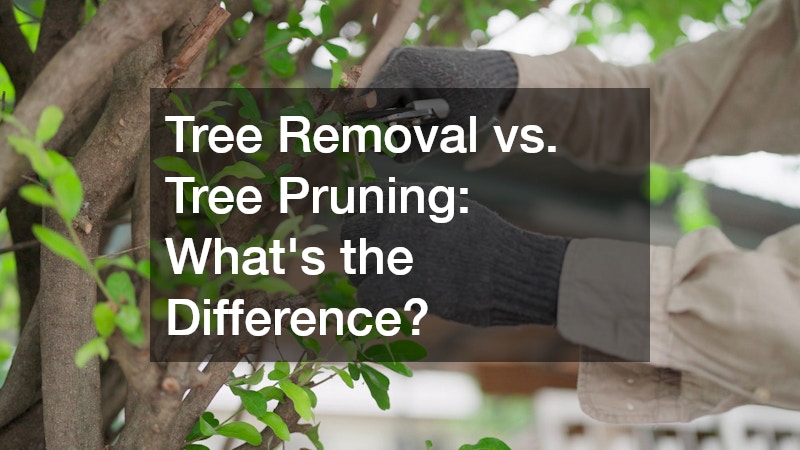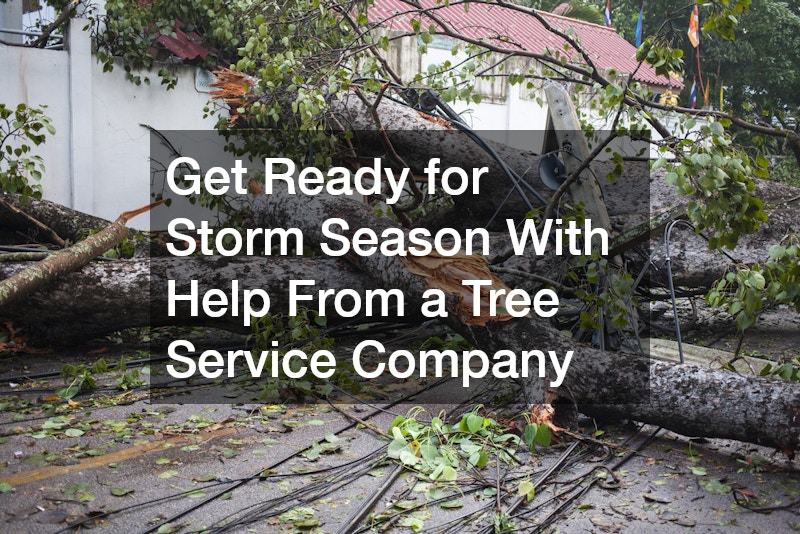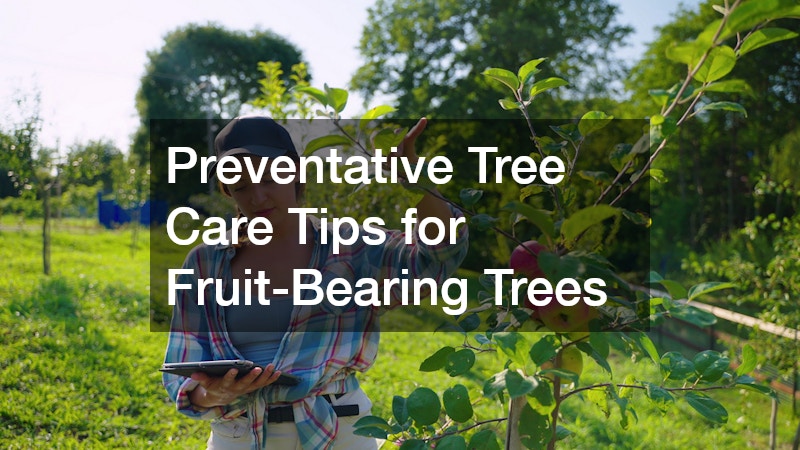Understanding the distinction between tree removal and tree pruning is essential for proper tree maintenance and landscape management. While both practices aim to ensure the safety and health of trees, they serve distinctly different purposes. In this article, we will explore each concept and delve into common questions related to them, helping you make informed decisions for your landscape.
When to Opt for Tree Removal
Signs That Indicate Tree Removal is Necessary
Tree removal becomes imperative in certain situations to prevent potential hazards. A tree that is diseased beyond recovery poses significant risks, and its removal may be the safest option.
Additionally, trees damaged severely by storms or other natural calamities may need to be removed to ensure the safety of people and property around them.
Another scenario warranting tree removal is when its roots are causing structural damage to buildings or underground utilities. Overgrown trees interfering with power lines also necessitate removal for community safety. Trees that are dead or dying contribute little to the ecosystem and can be removed to make space for new, healthy growth.
Removing a tree can sometimes be emotionally challenging, yet it becomes crucial when the tree is a liability. The presence of large, dead branches that could fall unannounced identifies a tree as hazardous. Removal then becomes a proactive choice to mitigate unforeseen dangers.
Environmental and Legal Considerations
Before proceeding with tree removal, it’s important to consider its environmental impacts. Trees play a crucial role in local ecosystems, providing habitat and food for various species, so their removal could have broader ecological implications. It’s essential to evaluate the tree’s role and replace it if necessary to maintain ecological balance.
Legal considerations are equally vital when contemplating tree removal. Certain jurisdictions require permits for removing trees, especially those of significant size or species that are protected. Failing to obtain the required permissions can result in hefty fines and legal repercussions.
It’s worth noting that local regulations often dictate the conditions under which trees can be removed. Consulting with local government or professional arborists can provide clarity on these regulations. Being informed helps you adhere to legal requirements while responsibly planning your landscape management strategies.
The Benefits of Tree Pruning
Health and Aesthetic Benefits
Tree pruning is a practice focused on enhancing the health and aesthetics of trees. By removing dead or diseased branches, pruning aids in preventing the spread of pathogens. This practice not only extends the life of the tree but also improves its structural integrity.
From an aesthetic standpoint, pruning contributes significantly to the visual appeal of a landscape. Eliminating overgrown branches and shaping the tree can make a garden more attractive. Well-pruned trees can become focal points that enhance the overall layout and design of the landscape.
Further, regular pruning encourages the growth of new, healthy branches. This invigorates the tree, allowing it to thrive and adapt better to its environment. By focusing on health and aesthetics through pruning, you ensure the tree continues to offer its benefits effectively.
Safety and Growth Management
Pruning also serves a critical role in ensuring safety within landscapes. Overhanging branches can pose risks to buildings, vehicles, and pedestrians; pruning helps decrease such hazards. Removing weak limbs before they fall is a preventative measure to protect both property and people.
Additionally, pruning supports controlled growth, preventing trees from growing into undesired areas. This is particularly useful in urban settings where space is limited and tree growth needs careful management. Pruning can direct tree growth, making them more suitable for their environment.
Effective pruning requires regular attention to the tree’s growth patterns and surrounding context. It helps in creating balance by allowing light and air to penetrate the canopy, which boosts its overall health. In doing so, pruning not only extends the tree’s life but also supports a sustainable landscape.
Deciding Between Tree Removal and Pruning
Assessing Tree Condition and Needs
Deciding between tree removal and pruning primarily involves a careful assessment of the tree’s condition. Factors such as the tree’s age, health, and structural stability come into play. If pruning can address the issues without compromising the tree’s health, it may be the favored option.
It’s important to evaluate the extent of any damage or disease affecting the tree. While pruning can remedy minor issues, severe conditions might only be safely resolved through removal. Assessment should also consider environmental factors like the tree’s location relative to structures and other trees.
Identifying the tree’s role within your landscape helps in making an informed decision. Consider if the tree serves specific ecological functions or if its presence is primarily decorative. A thorough evaluation provides a clearer picture of whether removal or pruning provides optimum outcomes.
Consulting Professionals for Advice
Engaging the expertise of professional arborists can significantly aid in this decision-making process. Arborists bring a wealth of knowledge, ensuring that their assessments are thorough and accurate. They can provide insight into both the potential risks and benefits of either tree removal or pruning.
Professionals also possess the tools and skills needed to perform these tasks safely and efficiently. Whether it’s executing a precise pruning or conducting a complex removal, their competency minimizes the risk of damage to the tree and surrounding property. They ensure compliance with local regulations, reducing the risk of legal complications.
Recognizing when to remove a tree and when to prune is vital for maintaining a safe and healthy environment. Both actions bear significant implications for tree health, aesthetic value, and safety. By understanding the benefits and drawbacks of tree removal and pruning, you can make informed decisions that benefit both the trees and your property.



